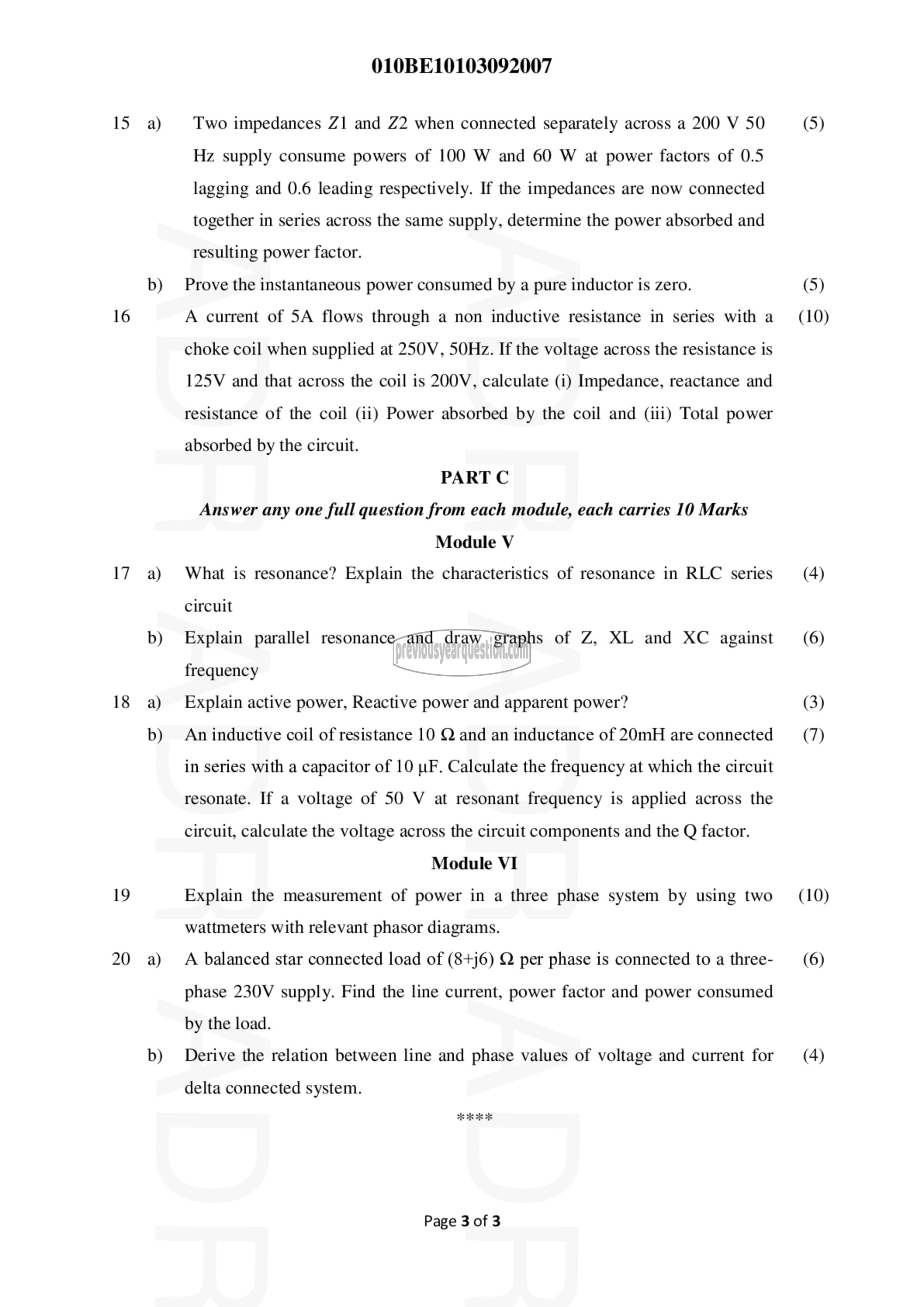APJ ABDUL KALAM TECHNOLOGICAL UNIVERSITY Previous Years Question Paper & Answer
Semester : S1 and S2
Subject : INTRODUCTION TO ELECTRICAL ENGINEERING
Year : 2021
Term : MAY
Branch : MECHANICAL ENGINEERING
Scheme : 2015 Full Time
Course Code : BE 101-03
Page:3
15
16
17
18
19
20
a)
b)
a)
b)
a)
b)
a)
b)
010BE10103092007
Two impedances 71 and Z2 when connected separately across a 200 V 50
Hz supply consume powers of 100 W and 60 W at power factors of 0.5
lagging and 0.6 leading respectively. If the impedances are now connected
together in series across the same supply, determine the power absorbed and
resulting power factor.
Prove the instantaneous power consumed by a pure inductor is zero.
A current of 5A flows through a non inductive resistance in series with a
choke coil when supplied at 250V, 50Hz. If the voltage across the resistance is
125۷ and that across the coil is 200V, calculate (i) Impedance, reactance and
resistance of the coil (ii) Power absorbed by the coil and (iii) Total power
absorbed by the circuit.
PART C
Answer any one full question from each module, each carries 10 Marks
Module V
What is resonance? Explain the characteristics of resonance in RLC series
circuit
Explain parallel resonance and draw graphs of Z, XL and XC against
frequency
Explain active power, Reactive power and apparent power?
An inductive coil of resistance 10 62 and an inductance of 20mH are connected
in series with a capacitor of 10 uF. Calculate the frequency at which the circuit
resonate. If a voltage of 50 V at resonant frequency is applied across the
circuit, calculate the voltage across the circuit components and the Q factor.
Module VI
Explain the measurement of power in a three phase system by using two
wattmeters with relevant phasor diagrams.
A balanced star connected load of (8+j6) Q per phase is connected to a three-
phase 230V supply. Find the line current, power factor and power consumed
by the load.
Derive the relation between line and phase values of voltage and current for
delta connected system.
RK
Page 3 of 3
(5)
(5)
(10)
(4)
(6)
(3)
(7)
(10)
(6)
(4)
